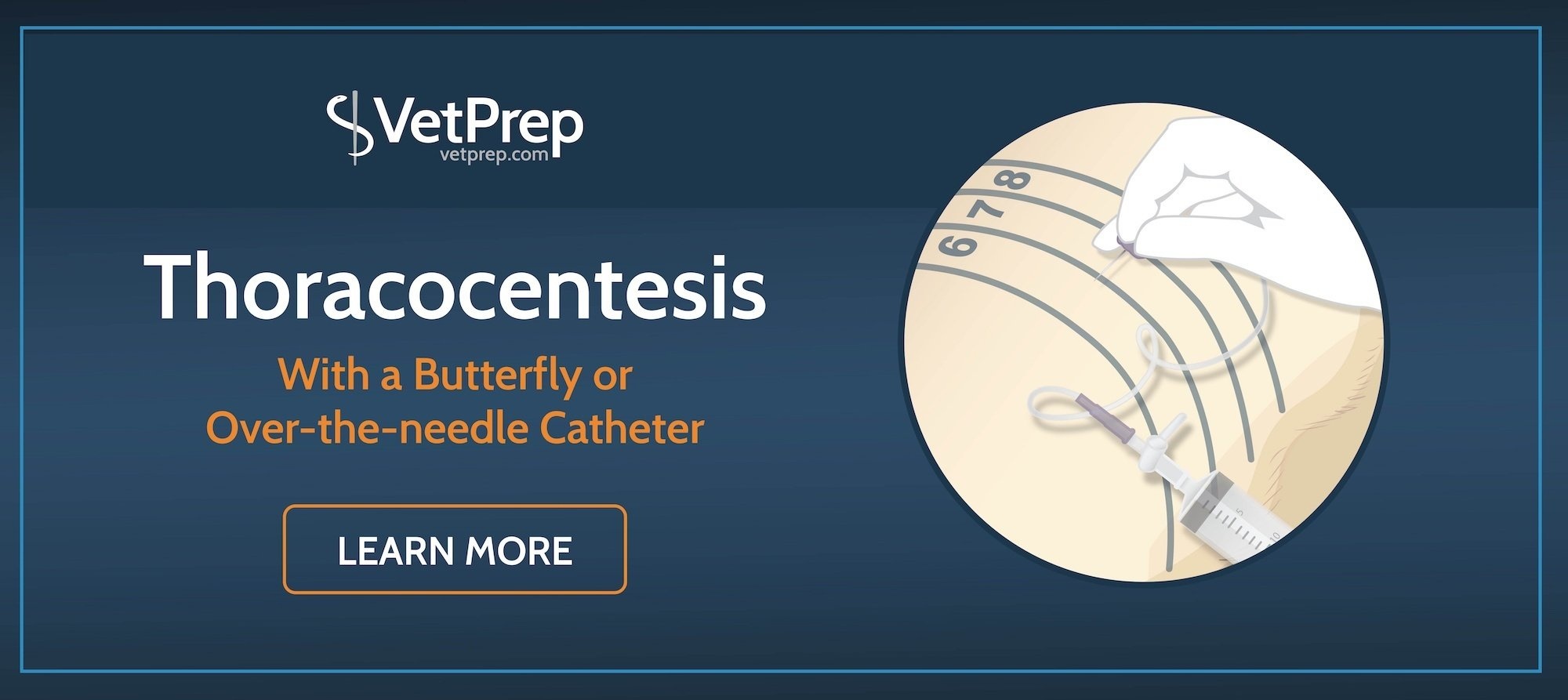
In this article, we will give you the step by step instructions of how to place an over the needle IV catheter in small animal patients.
How to Place an Over the Needle IV Catheter
1. First clip the area over the vein to be catheterized. Most commonly the cephalic vein is used, although other sites such as the saphenous or jugular veins may be used.
2. Cleanse and prep the site using chlorhexidine or povidone-iodine.
3. Choose the appropriate size catheter that you will use. It is best to choose the largest size that the patient will accommodate. Typically, we recommend 24 gauge for puppies or kittens, or very small dogs, 22 gauge for small dogs and adult cats, 20 gauge for medium size dogs, and 18 gauge for larger dogs. The lower the gauge the larger the catheter.
If the patient will be on an intravenous drip or fluids, you will want to connect a T-port adaptor to the catheter just after placement. If you are just giving injections, you may just need a male adaptor plug.

4. The restrainer will support the limb at the elbow, while holding off the vein. Sometimes you can visualize the vein, and other times you can only feel it. You may palpate the vein to determine where you will insert the catheter (it will feel slightly bouncy and may roll back and forth).
5. The catheter should be inserted into the vein with the bevel facing upward. You will envision placing it down and into the vein as you place it. Once you make the initial stab into the vein you will wait to see if there is a flash of blood in the hub.
6. If there is a flash of blood, you will advance the catheter in just a little further until it flows well, and then separate the hub of the catheter from the needle and thread it (push it off the needle) into the vein.
If there is no flash, you may back up slightly and re-direct the catheter to where you can palpate the vein until you get a flash. If you are unable to get a flash after redirecting, remove the catheter and hold off the site at the patient’s leg to prevent bleeding.
On the second attempt, you may try up a little higher. (Always get a new catheter and don’t re-use the first one.)

7. Once the catheter is inserted and flowing, the person holding off the vein can release (still supporting the limb but not holding it off). The needle is pulled out of the catheter and the T-port or plug is placed in the catheter opening. I put slight pressure just about where the catheter was inserted, so that when the needle is pulled out blood doesn’t come out excessively until the T-port or male adaptor plug is connected.
8. Once that has been completed, it is time to tape in the catheter. Use a thinner piece of tape (sticky side up) placing up under the catheter against the base of it. Wrap it around the catheter and secure it to the limb. Now it is time to flush the catheter with sterile saline or fluids to ensure it is flowing properly. If it flushes normally, you may finish securing the catheter. Use a regular size piece of tape to secure above and below as well, and lastly use some vet wrap to further secure.
Want More? Download this Free VetPrep Study Guide!
|


 Thoracocentesis
Thoracocentesis